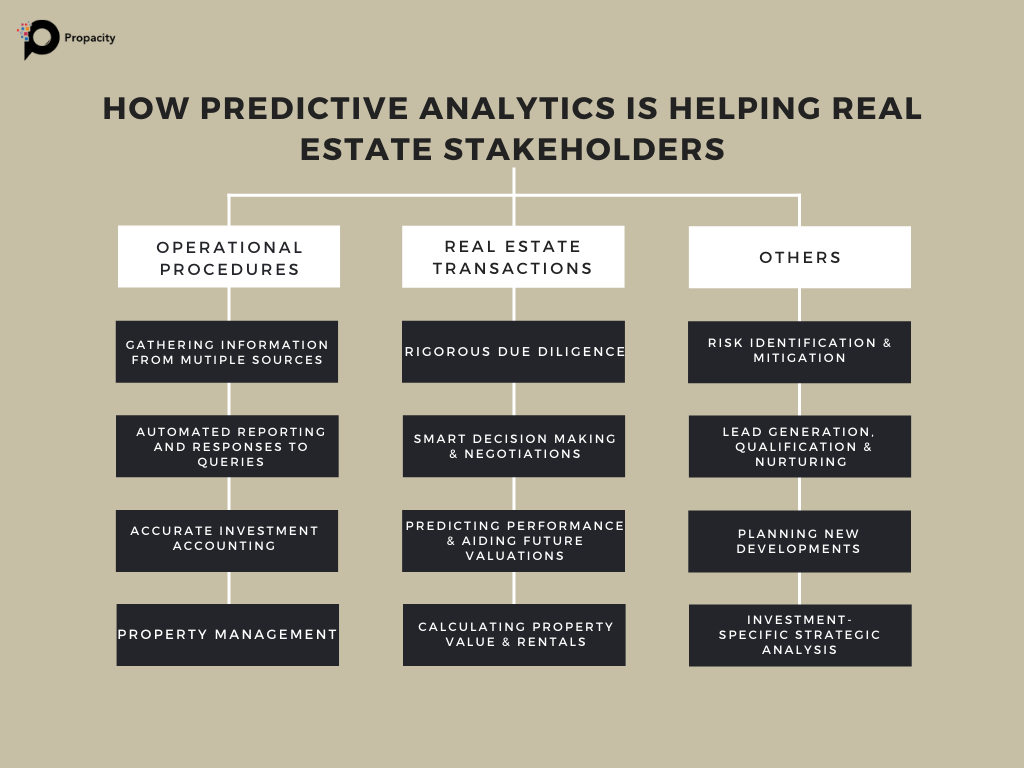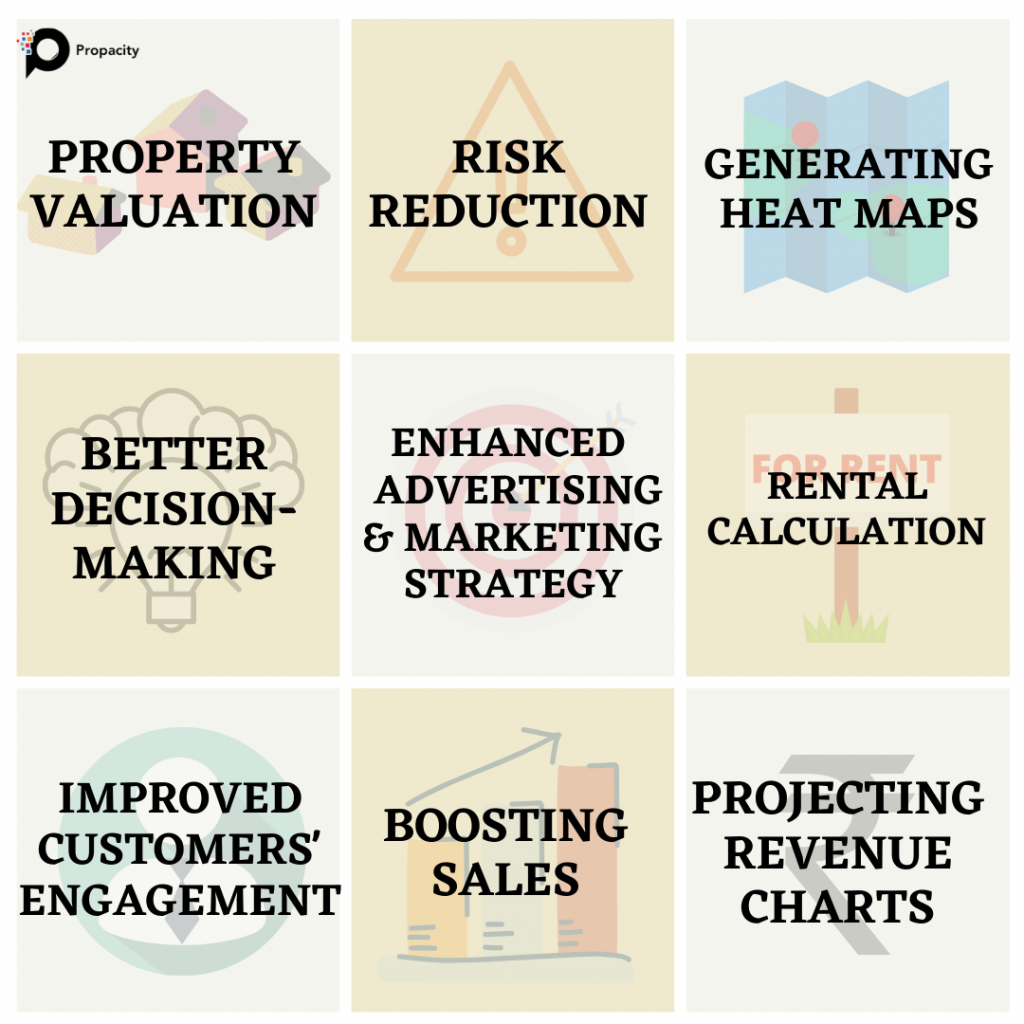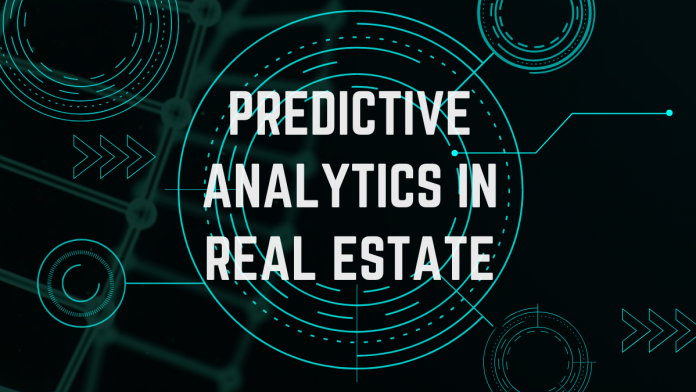Albeit at a slow pace in comparison to other sectors, technology has permeated almost every domain of the Indian real estate industry. While automated homes and artificial intelligence were already popular, various stakeholders are now incorporating predictive analytics in real estate in order to make transactions convenient and to develop future-ready buildings.
Real estate is one of those very few sectors which generally gets enormous amounts of consumer data through forms and brochures. With internet penetration reaching remote areas and real estate investors and home sellers searching for properties over the internet, stakeholders can identify prospective investors’ next moves in terms of buying or selling a property. The stakeholders can then use these data points to make better and forward-looking decisions.
But how exactly is that possible? The answer lies in the statistical technique called Predictive Analytics.
What is Predictive Analytics?
In scientific terms, predictive analytics refers to a multidisciplinary field where sourced data, statistical algorithms, and machine learning techniques work in tandem in order to recognize the likelihood of a particular event. However, to put it simply, “predictive analytics” helps systems and devices determine what’s likely to happen in the future based on the data of what has already happened in the past. The predictions are made by using the following:
| Statistics (analytical ability) | Data Mining (software tools & coding) |
| Machine Learning (techniques that teaches computer to model based on mathematical methods) | Predictive Modeling Techniques |
Past & Current Data + Analytics = Future Insights
Now to understand how predictive analytics in real estate works, let’s take an example.
Let’s say there are 1000 homes in a particular geographical area (XYZ). The statistical models of predictive analytics-backed systems will look at the previous buying-selling data related to that area. For instance, what were the common reasons for homeowners to sell their homes in the locality XYZ? Or, how many upcoming infrastructure projects are in line, in and around the region. Multiple statistical attributes will then be applied to this sourced data, which will help you generate future valuations.

Residential Sector Reaping the Benefits of Predictive Analytics in Real Estate
Rome wasn’t built in a day, neither did advanced technologies. However, the use of technologies such as virtual reality, the internet of things, and AI in real estate, particularly in the residential sector, has changed the landscape of the Indian real estate industry. Enlisted are the ways in which agents, brokers, builders, consultants, and other stakeholders are driving revenues by utilizing predictive analytics in real estate dealings.
1. Estimating Property Value
Agents and brokers take numerous factors like target audience, location and type of neighbourhood into consideration when defining the selling price of an asset. By using predictive analytics in property value estimation, agents can easily identify the spending patterns of investors, their commuting habits, and the areas where affluent or middle-income groups live or work. This helps in estimating a property value that aligns with the market rates.
2. Calculating Property Rentals
Tenants need a well-assessed estimate of the rentals that they’ll have to pay for a particular property. On the contrary, investors would want to understand the profitability of investing in an income-generating asset in a particular demographic location. Using predictive analytics in real estate, both issues can be tackled.
Infact, alongside finding a property with the highest ROIs, predictive analysis models also assist in finding assets based on your financial capabilities.
3. Predicting Price Appreciation
Whether it is for a client who intends to purchase a property or for a future investor, offering real-time insights on asset performance is essential for every real estate transaction. Predictive analytics in real estate not only enables agents and consultants to gauge through hundreds of properties simultaneously, but also provides a thorough understanding of pricing trends and market dynamics. This provides assistance in making informed decisions when looking at acquiring or selling off a property.
4. Improving Home Search Experience
With internet penetration reaching Tier-2 and Tier-3 cities, home buyers now search for properties online before reaching out to the real estate agents. Now what if we tell you that you can understand a prospective client’s requirements before they reach out to you? Predictive analytics in real estate has made this possible.
Since predictive analysis involves data collection and evaluation, incorporating this technology on real estate portals will help you understand the user behaviour, their lifestyle preference, budget range and other key details. While with this data, you can offer a carousel with property suggestions and introduce consumers to new projects that match their requirements. The consumers, on the other hand, will save time in sorting through hundreds of property listings.
5. Targeted Advertising & Marketing
Although customers visit your website by clicking on say Google or Facebook Ads, there is no guarantee of converting each visit into a sale. Hence, the primary objective of any real estate advertising and marketing campaign is to target a particular segment of the total customer base. These campaigns are set in accordance with what the customer, with the highest chances of conversion, needs to know.
To do this effectively, predictive analytics in real estate marketing can be incorporated. This technology can identify, qualify and rank the leads with the highest probability of buying a property. Utilizing this technology will not only increase profitability but will also improve customer satisfaction by removing contact with low-quality leads.

Applications of Predictive Analytics in Commercial Real Estate
Commercial investments are capital intensive. Hence, an in-depth market research and financial valuation has to be conducted. The highly-advanced algorithms of predictive analytics tools takes into consideration a plethora of factors, identifies the loopholes and generates valuable insights. Here’s how predictive analytics in real estate is aiding in the development of the commercial sector.
1. Generates Heat Maps
Those who are familiar with the intricacies of the real estate sector know that location plays an extremely important role in finding the right investment. By incorporating predictive analytics in real estate, you can offer a “heat map” (which is nothing but sorting neighborhoods based on the input) to investors.
For example, if a client is looking for localities in Mumbai that can generate a good rental income, the heatmap would display such areas and neighbourhoods. This data is generated by assessing multiple conventional as well as unconventional metrics like:
- Occupancy rates,
- Number of educational institutes in vicinity,
- Proximity to commercial and business hubs,
- Food stores, retail outlets and shopping complexes,
- Infrastructural development and crime statistics, etc.
2. Provides Assistance in Investment-Specific Analysis
Whether it is short-term investments or long-term decisions, predictive analytics in real estate helps in identifying the type of investment that can generate excellent returns. For example, real estate investment trusts (REITs) can leverage the macro- (e.g: Funds from Operations) and micro-business factors (e.g: parking, social hubs in the vicinity, building space, etc.) to identify the most profitable income-generating asset.
As for builders, predictive analytics systems can be used to analyze and develop amenities or in-house specifications that homebuyers are looking most often for.
3. Improves Property Management Efficiency
Churn Modelling is a classical application of predictive analytics in real estate that helps in predicting customer behavior. For example, if a tenant wants to rent a unit, a churn model will predict the probability of the tenant vacating the unit within a given time frame.
In addition to this, predictive analytics examines data from various electronic equipment; detects anomalies in variables such as temperature, pressure and humidity; and identifies maintenance issues within the buildings. This prevents any power or other failures and helps in cutting down on unnecessary expenses.
4. Aids in Portfolio Management
Not restricted to only property management and future valuations, predictive analytics in real estate also helps portfolio managers in diverse ways. By combining data from conventional and non-conventional sources, portfolio managers can forecast the performance of an asset. For example, performance data sets of shopping malls can be clubbed with information obtained from sources such as, social media and physical store sales to analyze consumer behaviour.
Predictive analytics also helps portfolio managers to identify the sources of risk, say from macroeconomic conditions or regulatory changes, thereby aiding in smart decision making.
5. Projects Revenue Charts
By sourcing and evaluating datasets, offering a clear insight on pricing trends and market dynamics, and identifying various risks, predictive analytics in real estate can easily project a revenue chart for any commercial or residential project.
Key Challenges in Using Predictive Analytics in Real Estate
Although new technologies like real estate tokenization have a myriad of advantages, they also come with their own set of risks and privacy concerns. If we specifically talk about using predictive analytics in real estate, then some of the issues associated with the technology have been given a rundown below.
Lack of Awareness
As much as technology in real estate is revolutionizing the sector, many agents and companies are reluctant to adopt these systems. Either because they are unaware of the wide variety of datasets available or they have limited analytical ability and time to generate and assess insights.
Complex Models
Real estate is a very vast domain. In order to cover a wide region and to generate accurate and valuable insights, a number of input variables are added in predictive analysis models. This creates a highly complex and expensive model, making monitoring slightly difficult.
Data Risks
When it comes to the risks associated with predictive analytics in real estate, it can be segregated into authenticity and privacy. Huge datasets will be sourced and evaluated from multiple sources. So there can be privacy risks if the collected data includes non-public or personal information. Additionally, the authenticity and validity of datasets can be put into question if there is no transparency or set procedure to collect data.
Way Forward
Although business intelligence and predictive analytics have barely scratched the surface, it has already amped-up the game for various stakeholders in the real estate value chain. Whether it is investing in residential and commercial properties, selling assets, or managing portfolios, predictive analytics in real estate analyses key problems, identifies the root causes that need to be addressed, and powers smart decision-making.
Certainly, there are various challenges associated with the technology. Hence, instead of ad hoc adoption, predictive analytics-based tools should be deployed in a phased manner. Additionally, whether it’s a property management company or a commercial investor, the focus should be laid on improving data gathering, storing, and analyzing ability.
Just like other emerging technologies, predictive analytics in real estate is here to stay. The tools will generate relevant predictions based on customer priorities. However, how you can better the process of driving profits by levering the predictive analytics models depends on your digital strategy and the sources from where you intend to club the data from.




![Real estate crowdfunding: A new way to invest in property [2024 Updated] REAL ESTATE CROWDFUNDING](https://www.propacity.in/blog/wp-content/uploads/2021/02/REAL-ESTATE-CROWDFUNDING-1-218x150.png)
![What Is 3D-Rendering? Complete Guide to 3D Visualization [2024 Update] 3d-rendering](https://www.propacity.in/blog/wp-content/uploads/2021/02/3d-rendering-218x150.png)
